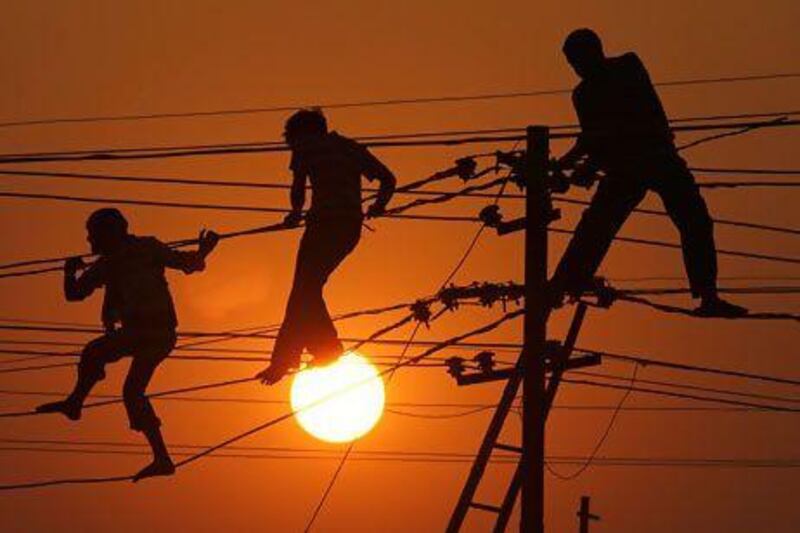India should step up its development of green energy solutions, including wind and solar power, to help solve the major shortfalls in its energy system, industry leaders have urged.
"In many of the rural areas, renewable energy is the first and most obvious solution," said Christoph Frei, the secretary general of the World Energy Council. "There's an opportunity for more, particularly when one thinks about the poverty aspect. There seems to be commitment, but if you look at the big picture, it remains a very small portion of the overall system."
There are hundreds of millions of Indians in rural areas who do not have access to electricity while the country is facing enormous challenges providing for those who do.
The shortfalls are considered significant risks to the country's economic growth. GDP growth slowed to 5.3 per cent in the quarter between July and September. Last summer, outages in the north of India, described as the worst in history, left hundreds of millions without power.
Outages are so commonplace in some areas that many homes and businesses have generators so they can keep operating through regular power cuts. Coal shortages, expensive fossil fuel imports and generous government subsidies on fuel are all strains on the energy sector and the economy. The accumulated losses of India's state power distribution companies are estimated at more than 2.4 trillion rupees (Dh164.4 billion) as of the end of last March, according to the government.
India is in second-to-last place on the World Energy Council's energy sustainability index, with only Senegal performing worse.
But there are hurdles facing the development of renewable energy solutions, particularly regarding the financing of projects. "The aspiration is there for India to change that and move forward, but there's a lot of work needed," said Mr Frei. "Talking to some of the investors, what they say the biggest issue is, is the cost of debt. If you have a very high cost of debt in a context of relatively high inflation, then that is for an investor a difficult burden."
Sanjay Kaul, the president of the University of Petroleum and Energy Studies, also highlighted the enormous potential of the renewables sector. "Renewables need to be taken up [on a] war footing," Mr Kaul said. "Even if India taps its solar potential by around 10 per cent - by mandating the use of solar-powered equipment in all state buildings and embedding installation of solar panels on residential and commercial in building by-laws and other utilities - it would be able to generate more power than all the ultra mega power projects planned till date."
He said that investment in wind power in India has been encouraging, with GE Energy Financial Services among the investors in wind projects as part of a US$115 million (Dh422.4m) venture. "Wind also presents a similar upside to the India power predicament," said Mr Kaul. "With the increasing hub heights and related wind turbines technologies now becoming feasible, the potential of wind power generation can be more than doubled to 1 terawatt."
The government has introduced initiatives for the renewable energy industry, including tax incentives and the establishment of the National Solar Mission. But there remain other problems that need to be tackled, Mr Frei said. "One of the issues that stands over average in global comparison is the concern about energy and water linkages," he said."Another issue is a call for a regulatory review.
"How can India move from a place where the electricity infrastructure is not self-financed, if you want, to a place where there's a better coverage of costs in the system.
"If the distribution companies are managed at a state level, it has to be made sure that they recover costs; otherwise there's simply not going to be any infrastructure expansion."





